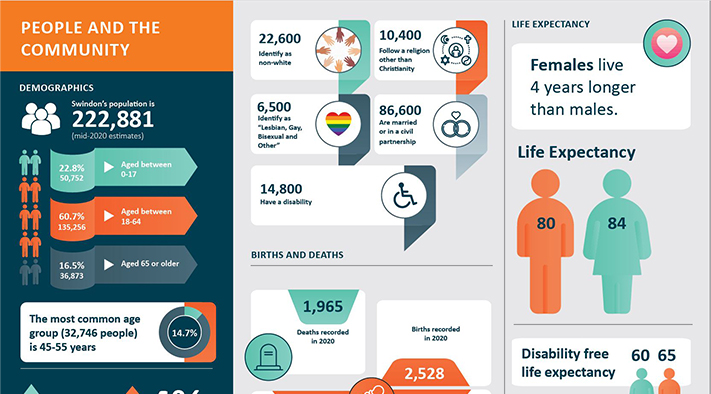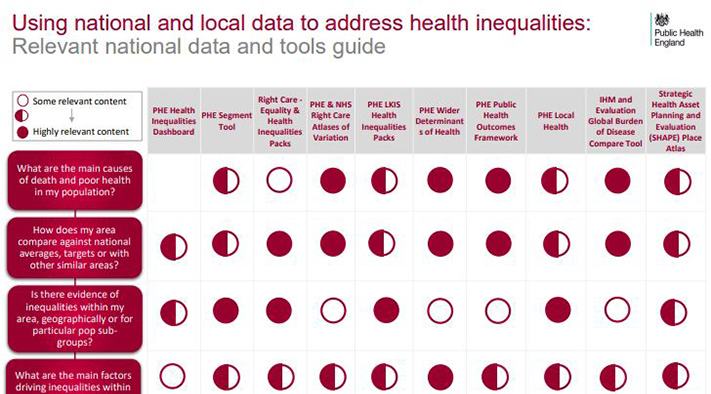Click here to read the updated Joint Strategic Needs Assessment 2024
Welcome
Swindon’s Health and Wellbeing Board (HWB) is a partnership established to ensure an integrated and collaborative approach to health social care across Swindon. The Board is responsible for producing the Swindon Joint Health and Wellbeing Strategy and the Joint Strategic Needs Assessment (JSNA). Click on the tiles below to read more about the current and future health and wellbeing and social care needs of Swindon’s population.
LATEST NEWS
Swindon Children and Young People Health Needs Assessment
The health needs of our youngest residents are key to shaping a healthy and thriving community. Identifying areas which have consequences for their lifelong health with the potential for preventative action is therefore crucial. The Swindon Children and Young People Health Needs Assessment 2024 provides a broad overview of the health needs of this population group, covering a range of topic areas and different population subgroups from pregnancy to the age of 24. It identifies
Swindon Early Intervention, Youth and Community strategy
Swindon’s Early Intervention, Youth and Community strategy will encompass the direction of Swindon’s two-year Children’s Services Improvement Plan to deliver real and sustainable transformation that delivers improved outcomes for the most vulnerable children and young people with regard for improvement across practice, people, place, and processes. The report is available to view or download from the Health and Wellbeing strategies page.
Domestic Abuse Needs Assessment 2024
Domestic abuse (DA) includes a range of abusive behaviours. Whilst it is common, it is often hidden and therefore difficult to quantify. The Swindon Domestic Abuse Needs Assessment 2024 provides an updated overview of domestic abuse and related forms of violence in Swindon, along with recommendations for shaping future strategies and service delivery methods. The report is available to view or download from the Health Needs Assessments page.
Director of Public Health Annual Report 2023
The Director of Public Health (DPH) has a statutory requirement, under the Health and Social Care Act 2012, to produce an annual report detailing the health of the population. The purpose of this report is to provide insight into the health of people in Swindon. The 2023 report focuses on the impact of housing and health. It considers some of the societal, financial, and environmental impacts of poor housing on health, offering an overview of
Health Protection Annual Report 2022-23
Health Protection is a term used to describe a set of activities within the public health system that protects individuals, groups and populations from communicable (infectious) diseases and other threats to health, including non-infectious environmental hazards such as chemicals and radiation. Health protection is one of the responsibilities of the local Director of Public Health, working with key partners including the UK Health Security Agency, the NHS, national government, industry, other agencies and the public.


